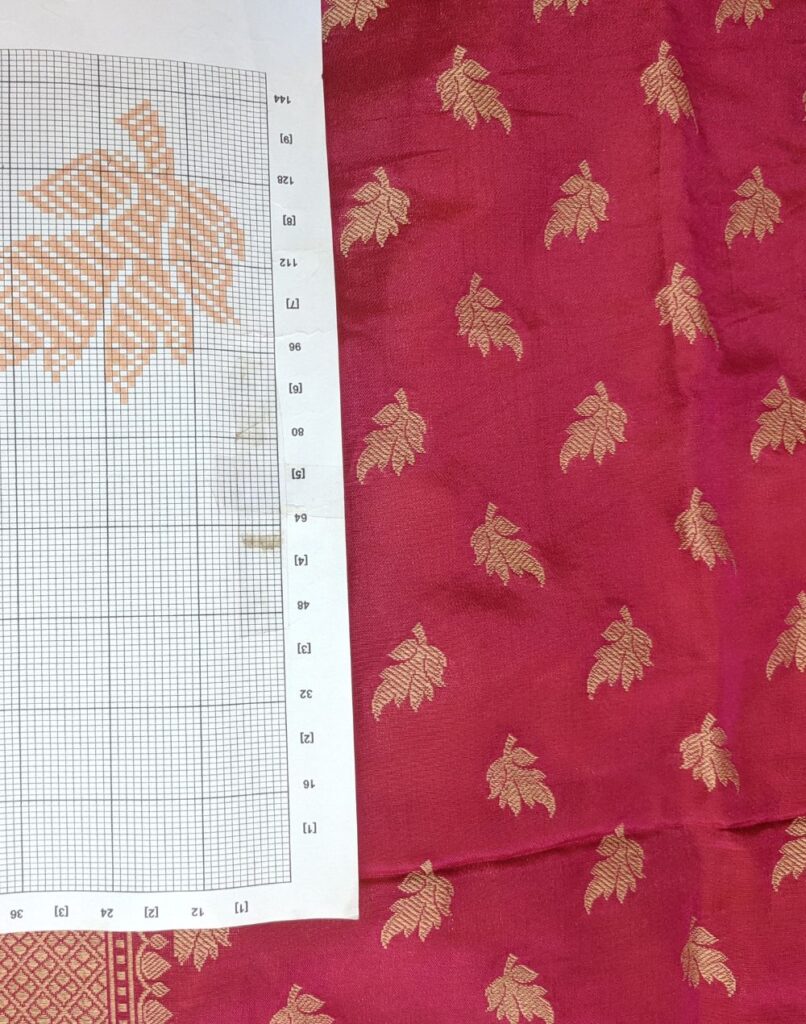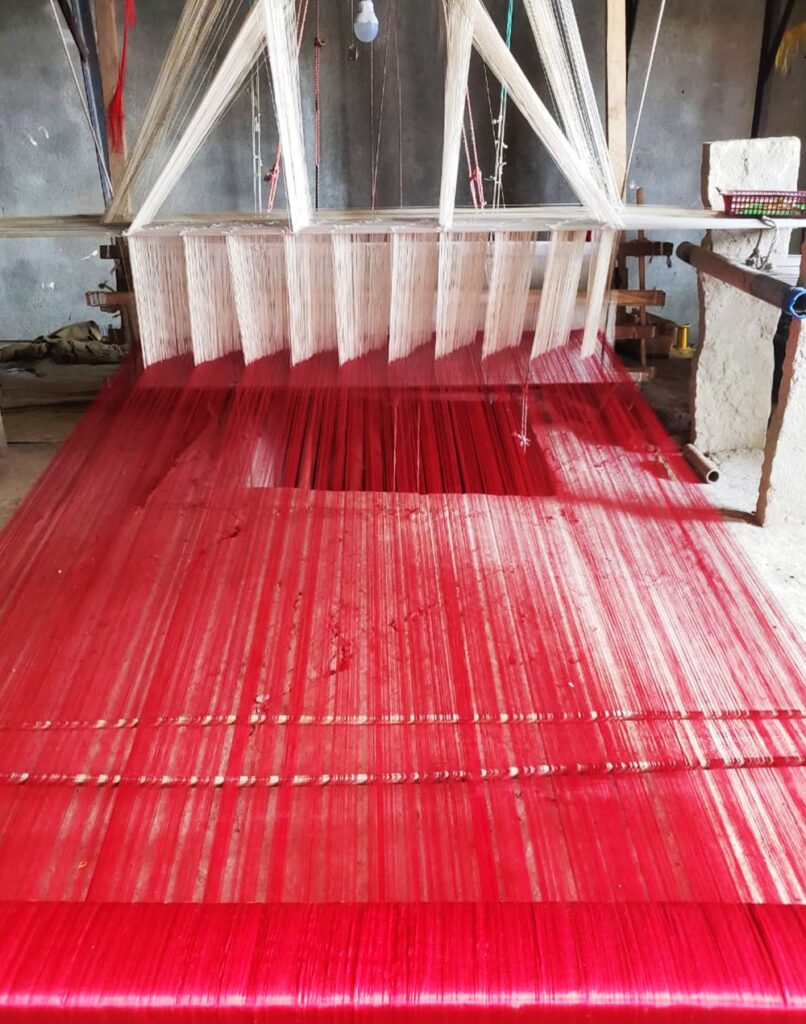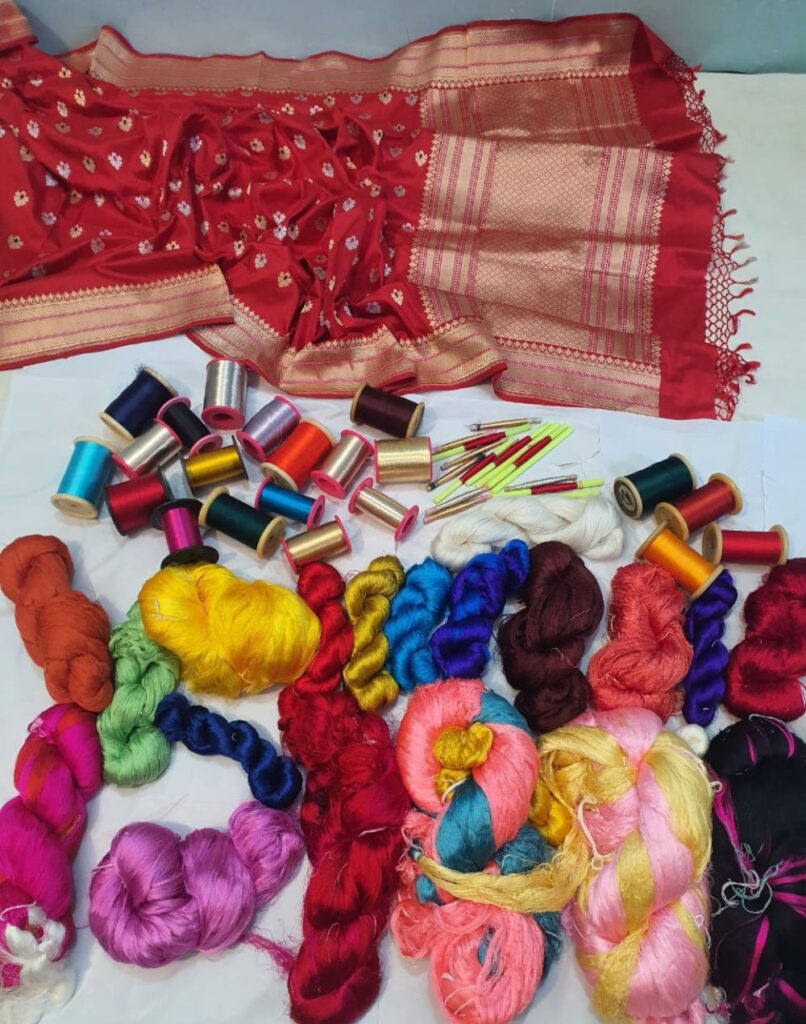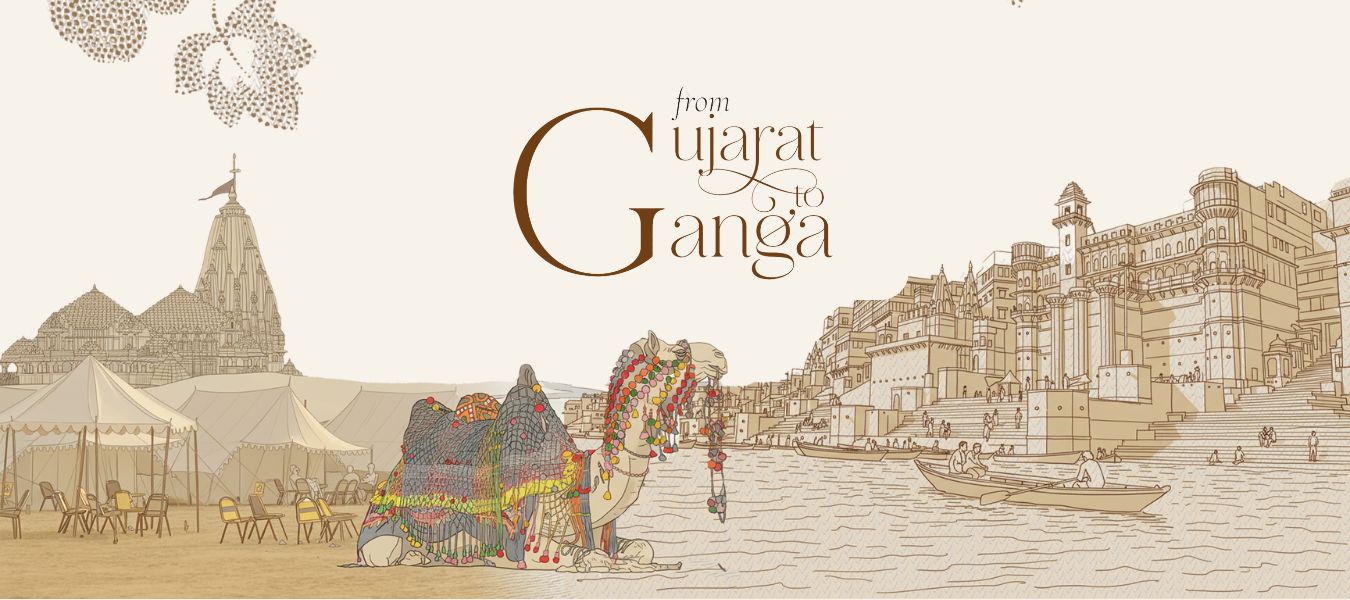If you’ve ever run your hand over a Banarasi sari, you know the feeling: the fabric is soft as water, yet rich as treasure. It’s almost unbelievable that something so delicate carries so much history. But here’s the truth- a Banarasi sari isn’t just made on a loom, it’s made from journeys, memories, and the quiet genius of generations.
When the Looms Travelled East
The story begins in Gujarat. For centuries, its weavers had mastered the art of silk and brocade, creating jewel-toned fabrics that dazzled traders across the seas. But history is never still. With shifting politics in the west, many of those master weavers moved eastward, carrying their skills to the banks of the Ganga.
Banaras welcomed them, and something extraordinary happened: their techniques met a city that already had a rhythm of its own. The confluence of Gujarati precision and Banarasi imagination gave birth to a new craft identity, one that would later be known simply as “Banarasi.”
A Language of Threads
This was more than a geographical shift; it was a creative transformation. Gujarati weavers brought with them love for butis and bright contrasts. Banaras added its flowing bel patterns, softer palettes, and local storytelling motifs. Together, they created a textile language that spoke of both discipline and poetry.
Even the way patterns were remembered was unique. Before design graphs were common, weavers used taal, a sung rhythm of instructions that sounded like a folksong. Each sari was literally composed like music, where a missed beat meant a broken motif.
Silver, Gold, and Secrets
The fabric itself was no less magical. Older Banarasis weren’t just silk and shimmer, they carried real silver threads, sometimes plated with gold. Owning a sari was like wearing your bank account on your shoulder, equal parts glamour and investment.
A Sari That Remembers
In many families, Banarasis became more than heirlooms. Each piece held a memory: a motif chosen for a bride, a colour linked to a festival, a sari remembered as a gift from a loved one. Some even acted like dowry ledgers, every weave telling who it came from and when. To this day, you’ll hear someone say, “This one? My grandmother’s wedding sari,” and you’ll realise the fabric has remembered longer than people do.



The Journey Woven In
So, did Banarasi weaving come from Gujarat? In part, yes, but that’s just the beginning of the tale. What began in Gujarat took root in Banaras, grew new leaves by the Ganga, and blossomed into a textile tradition unlike any other.
The next time you drape a Banarasi, pause for a second. You’re not just wearing silk. You’re carrying a journey that began hundreds of years ago, travelled across states, learnt new languages, and still found a way to shine brighter with every passing generation.






